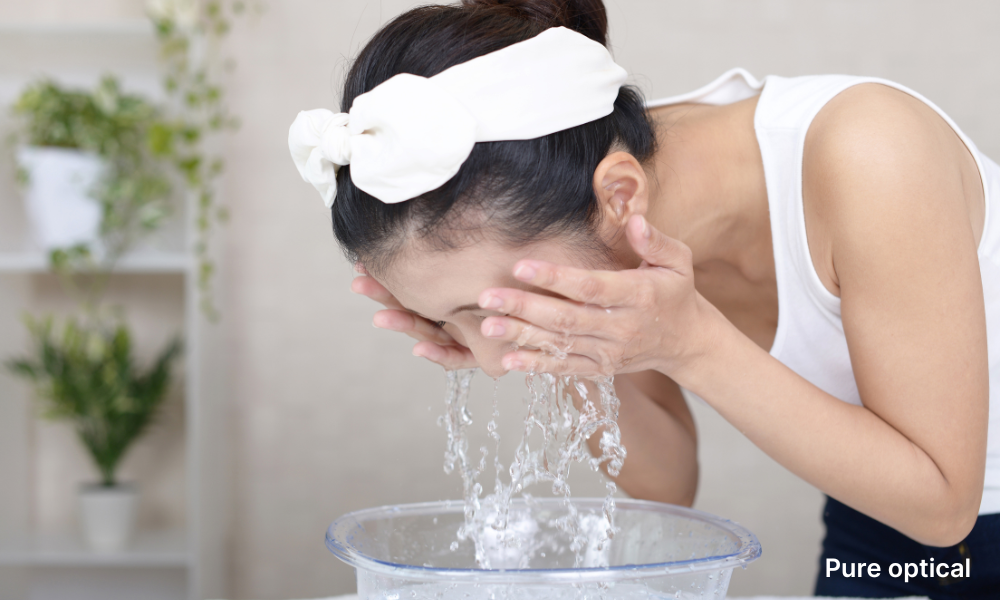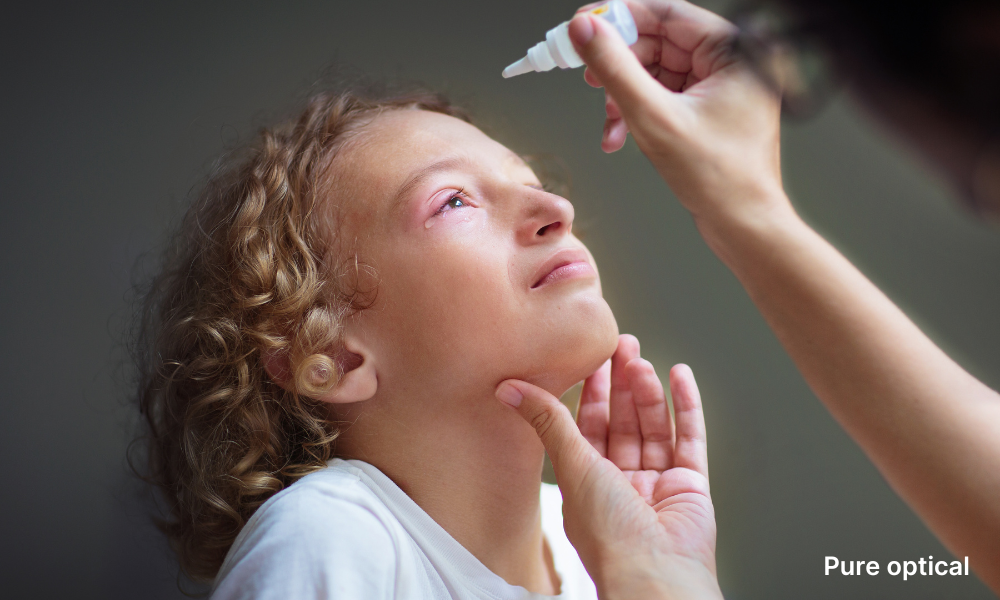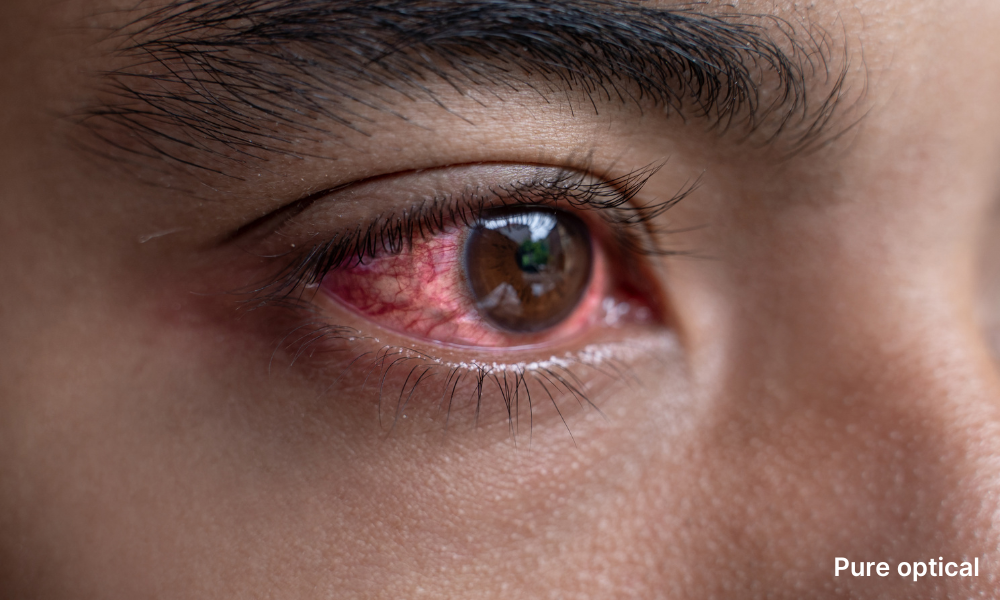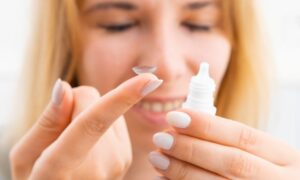Pink eye, also known as conjunctivitis, is an inflammation or infection of the transparent membrane (conjunctiva) that lines the eyelid and covers the white part of the eyeball. When small blood vessels in the conjunctiva become inflamed, they’re more visible, causing the eye to appear pink or red.
It is often characterized by redness, itching, and a gritty feeling in the eye, along with a discharge that can form a crust during the night.
Whether you wake up with that telltale crusty feeling or suffer from red, itchy eyes throughout the day, understanding pink eye remedies can help alleviate your symptoms until you can see a healthcare professional.
In this article, we’ll explore various strategies for treating conjunctivitis at home, focusing on safe, effective pink eye treatments.
Understanding forms and causes of pink eye
Before diving into treating pink eye, it’s crucial to understand its various forms and underlying causes. This will help you in choosing treatment that is best suited for a particular type of conjunctivitis you’re dealing with.
Viral conjunctivitis
Viral conjunctivitis, often triggered by the same viruses that cause the common cold, is a highly contagious form of pink eye. It typically spreads through direct contact with infected individuals or through contaminated surfaces.
Symptoms of viral conjunctivitis include redness, itching, and watery discharge from the eyes. Unlike bacterial conjunctivitis, which may produce a thicker, yellow-green discharge, the discharge from viral conjunctivitis is usually clear.
Bacterial conjunctivitis
Bacterial conjunctivitis is caused by bacteria and is characterized by symptoms such as eye redness, swelling, and a heavy, often yellow-green discharge that may cause the eyelids to stick together, especially after sleeping.
This type of conjunctivitis is also highly contagious and can spread through direct contact with infected individuals or by sharing personal items like towels or eye makeup that have been contaminated.
Allergic conjunctivitis
Allergic conjunctivitis arises from the body’s immune response to allergens like pollen, pet dander, and dust mites. Unlike viral or bacterial conjunctivitis, it is not contagious but can cause considerable discomfort.
Symptoms typically include itching, redness, swelling, and a watery discharge from the eyes. People may also experience sneezing and nasal congestion as part of the overall allergic reaction.
Once you understand the different forms and causes of pink eye, you can confidently select the most appropriate home treatment for your specific condition.
However, it’s crucial to consult a healthcare provider to ensure that the pink eye treatment you’ve chosen is appropriate before you begin using it.
Home remedies for pink eye
Warm and cold compresses
Applying warm or cold compresses can provide significant relief for conjunctivitis symptoms. For bacterial and viral pink eye, a warm compress helps reduce swelling and discomfort by loosening crusty build-up and keeping the eyes moist.

Use a clean cloth soaked in warm water, wring it out, and apply it gently to your eye for a few minutes. Repeat several times a day. For allergic pink eye, a cold compress can soothe itching and swelling. Use a clean cloth chilled with cold water or even a cold pack wrapped in a towel.
Tea bags
Using tea bags is a popular home remedy for pink eye treatment. Tea contains bioflavonoids that fight viral and bacterial infections and reduce inflammation. Chamomile, in particular, is beneficial due to its anti-irritant and anti-inflammatory properties.
To use tea bags for pink eye, steep them in boiling water for a few minutes, let them cool down to a safe temperature, and place them on the affected eye. Ensure the tea bags are clean and use a separate tea bag for each eye to avoid cross-contamination.
Hygiene practices
Good hygiene is crucial when managing or preventing conjunctivitis. Regular hand washing can prevent the spread of infectious agents that cause pink eye.
Avoid touching or rubbing your eyes, as this can exacerbate the condition or spread the infection to others or your other eye. Wash items like pillowcases, towels, and washcloths in hot water and detergent; these items should not be shared with others until your infection has cleared up.
👀 You might want to check out these eye health tips.
Herbal and natural solutions
Honey
Honey has natural antibacterial properties and can be an effective remedy for bacterial pink eye. Dilute pure honey with a small amount of boiled water to make a soothing eye drop.
Use this solution to rinse the eyes lightly; however, ensure the solution is thoroughly cooled before application to avoid any potential harm.
Aloe Vera
Known for its soothing and anti-inflammatory effects, aloe vera can be used to relieve symptoms of pink eye. Extract gel from an aloe vera leaf and mix it with some water to create a light solution.
Use this to wash the affected eye, helping to soothe irritation and inflammation. Make sure the aloe vera is pure and free from additives that could irritate the eye.
Over-the-counter solutions
Several over-the-counter (OTC) products can help manage pink eye symptoms. Lubricating eye drops, often referred to as artificial tears, can relieve dryness and irritation.

For allergic conjunctivitis, OTC antihistamine drops can reduce itching and swelling. Always check the product label and consult with a pharmacist or healthcare provider to ensure these treatments are suitable for treating conjunctivitis.
Tips to prevent pink eye
- Preventing pink eye is fundamentally about maintaining strict personal and environmental hygiene. Regular hand washing is essential, especially after touching the face or eyes, which can transfer infectious agents.
- Avoid sharing personal items like towels, face cloths, and eye makeup, as these can harbor bacteria or viruses and facilitate the spread of infection.
- For those prone to allergic conjunctivitis, identifying and minimizing exposure to common allergens such as pollen, dust mites, and pet dander is crucial.
- Keeping living and work environments clean by regularly dusting and vacuuming can also help reduce allergen presence.
Conclusion
While pink eye remedies can be helpful in managing mild cases of pink eye at home, they are not substitutes for professional medical help.
It’s essential to consult a healthcare professional if home remedies do not improve your symptoms within 24 to 48 hours. Immediate medical attention is needed if you experience severe symptoms such as intense eye pain, vision problems, or sensitivity to light. These could be signs of more serious conditions that require professional pink eye treatment.
Always start by consulting a healthcare provider to accurately diagnose your type of conjunctivitis and approve appropriate methods for treating conjunctivitis. With the right approach, you can quickly mitigate the discomfort of pink eye and prevent its spread to others.
👀 You might like this guide: How To Get Rid Of Bags Under Eyes.




